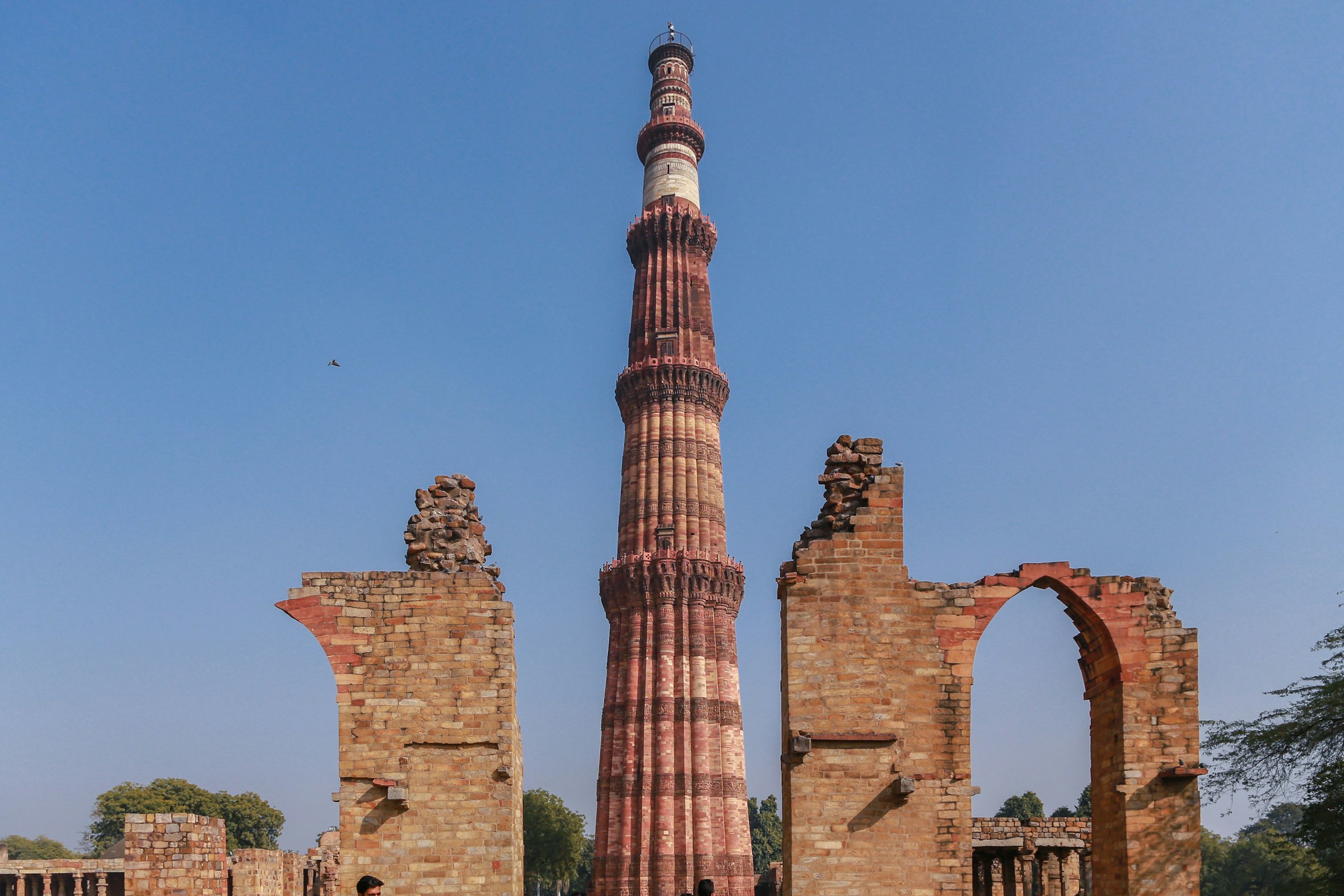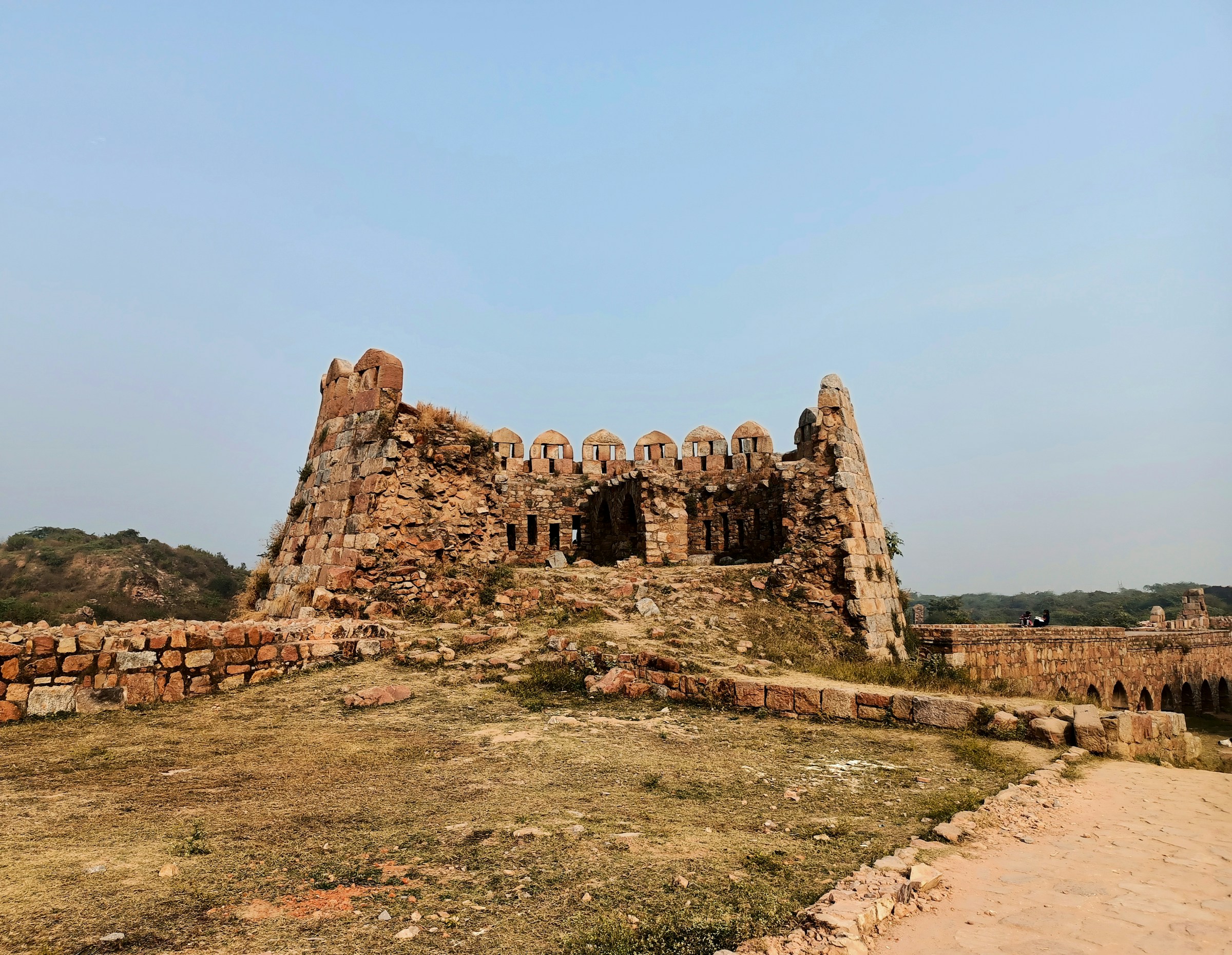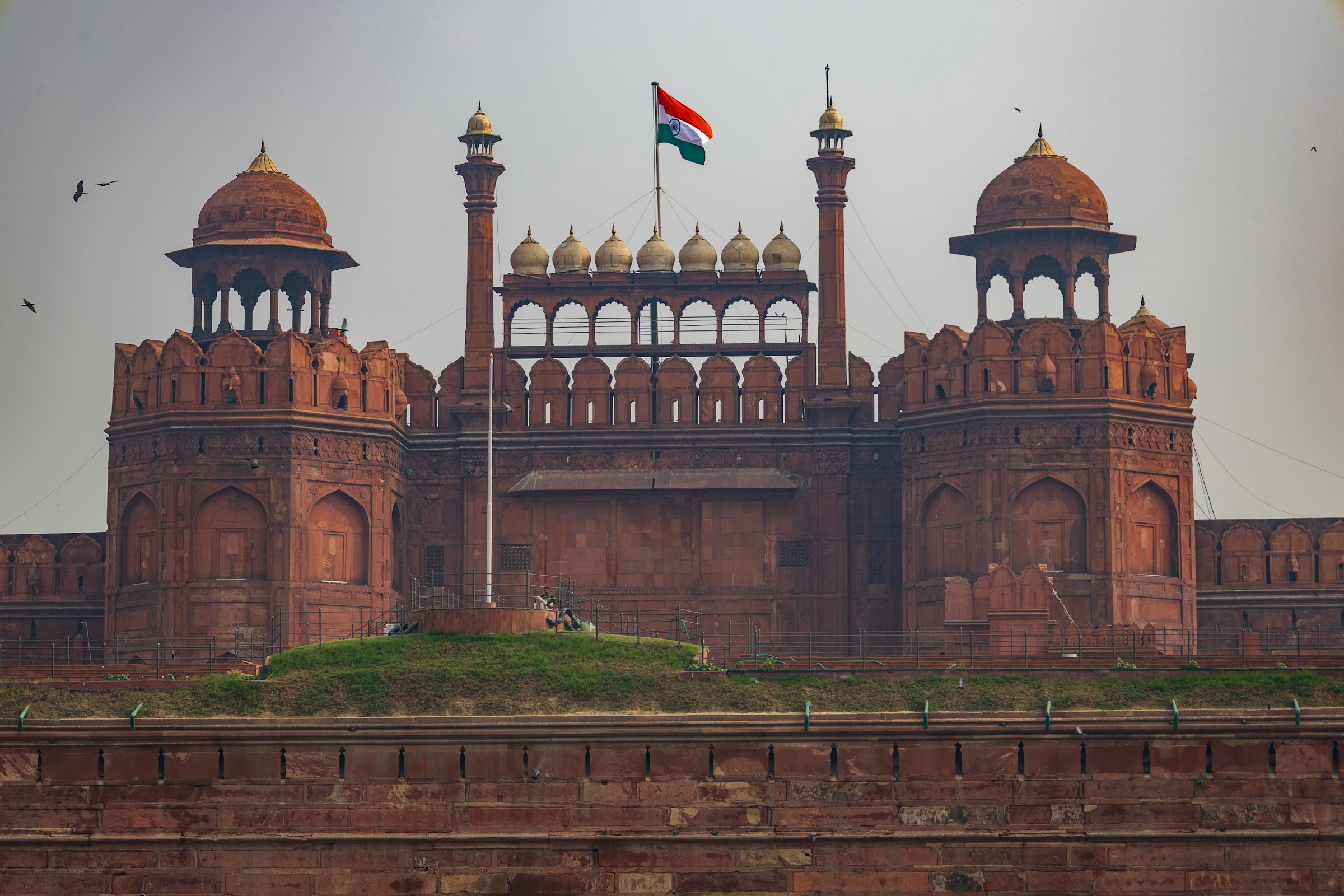Delhi, the heart of Bhārat, is a vibrant city where ancient history meets modernity. Built on the legendary foundation of Indraprastha from the Mahabharata era and the remnants of at least seven historical cities, each contributing to its rich cultural heritage. Let’s journey through time and explore these seven cities that form the foundation of modern Delhi.
Qila Rai Pithora (Lal Kot) 🔗
The earliest historic city of Delhi, Lal Kot, was established by the Tomar ruler Anangpal Tomar in the 11th century. It was later expanded by the Chauhan king, Prithviraj Chauhan, who named it Qila Rai Pithora. This fortified city served as a bulwark against invaders and is a testament to the architectural prowess of early medieval Bhārat. The remnants of its walls still echo tales of valor and strategic brilliance.

Mehrauli 🔗
The second city, Mehrauli, was founded by the Mamluk dynasty’s first ruler, Qutb-ud-din Aibak, in the late 12th century. This city is famous for the Qutb Minar, the tallest brick minaret in the world, which stands as a symbol of victory and Islamic architectural excellence.
The Qutb Minar Complex also houses the historic iron pillar, renowned for its rust-resistant composition. The pillar predates Qutb Minar by more than seven centuries, having been constructed in the early 4th century.
Siri 🔗
Established by Alauddin Khalji in the early 14th century, Siri was the third city of Delhi. It served as the administrative and military headquarters of the Khalji dynasty. The fortifications of Siri, designed to withstand Mongol invasions, were formidable. Though not much remains of Siri today, Alauddin Khalji’s legacy can be traced in the nearby Hauz Khas complex, which includes a large reservoir built to supply water to the city.

Tughlaqabad 🔗
The fourth city, Tughlaqabad, was founded by Ghiyas-ud-din Tughlaq in the 14th century. This city was designed to be impregnable with massive walls and a grand fort. However, its glory was short-lived due to water shortages and political turmoil. The ruins of Tughlaqabad Fort stand as a haunting reminder of the Tughlaq dynasty’s ambition and the impermanence of power.
Firozabad 🔗
Firoz Shah Tughlaq, a descendant of Ghiyas-ud-din, established the fifth city, Firozabad, in the mid-14th century. Also known as Firoz Shah Kotla, this city was known for its palaces, gardens, and the Ashokan pillar brought from Topra. Firozabad marked a period of architectural innovation and urban planning in medieval Delhi.
Shergarh (Dinpanah) 🔗
The sixth city, Shergarh, also known as Dinpanah, was initially founded by Humayun in the 16th century and later completed by Sher Shah Suri, who named in Shergarh. Shergarh’s strategic location and robust fortifications were intended to establish a new capital. Today, Purana Qila stands as a testament to this city’s historical significance, with its majestic gates and the serene lake reflecting the grandeur of the past.

Shahjahanabad 🔗
The seventh city, Shahjahanabad, was built by the Mughal Emperor Shah Jahan in the mid-17th century. This walled city, now known as Old Delhi, was the epitome of Mughal architecture and urban planning. The Lal Qila, Jama Masjid, and Chandni Chowk are iconic landmarks from this era, showcasing the zenith of Mughal art and culture.
Each of these seven cities has left an indelible mark on Delhi’s landscape and culture. From the Tomars and Chauhans to the Mughals, the layers of history are woven into the very fabric of modern Delhi. Exploring these ancient cities offers a glimpse into the grandeur, resilience, and diversity that define one of the world’s oldest continuously inhabited cities. Whether through ancient forts, majestic mosques, or bustling bazaars, the legacy of the seven cities lives on, enriching the soul of Delhi.